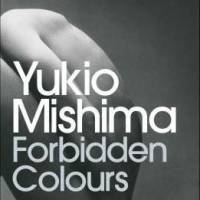Written in 1951 and translated into English in 1968, the title of "Forbidden Colours" represents taboo desires and beliefs, most notably homosexuality and misogyny. Shunsuke is an aging writer whose vile views on women are given the opportunity for physical manifestation in Yuichi, a gorgeous young gay man who is engaged to Yasuko. Shunsuke immediately sees that this will be a marriage of convenience and financial security for Yuichi, who casually admits to a total disinterest in his fiancee as a person or sexual being. Shunsuke takes up Yuichi the way a puppet-master takes up a marionette and uses him to torment Yasuko and, symbolically, all women. Over time he creates a monster that he can no longer control.
Forbidden Colours, by Yukio Mishima, Translated by Alfred H. Marks.
432 pages
Penguin, Fiction.
In many ways, this is a repellent book, wallowing in narcissism to an almost sociopathic degree, but as always with Yukio Mishima, there is more going on below the surface. Like Vladimir Nabokov with "Lolita" or Oscar Wilde with "Dorian Gray," Mishima gambled appeasing his readership against the demands of his art and won.
He never gave his readers an easy ride, but his novels reward effort with Dostoevskian insight into the human condition and offer a window into lives far less ordinary. The novel form is a tool for exploring the human psyche, and while many would have turned aside rather than delve so deeply into minds so dark, it does Mishima great credit that he undertook this challenge and saw it to the end.
Read archived reviews of Japanese classics at jtimes.jp/essential.


















With your current subscription plan you can comment on stories. However, before writing your first comment, please create a display name in the Profile section of your subscriber account page.